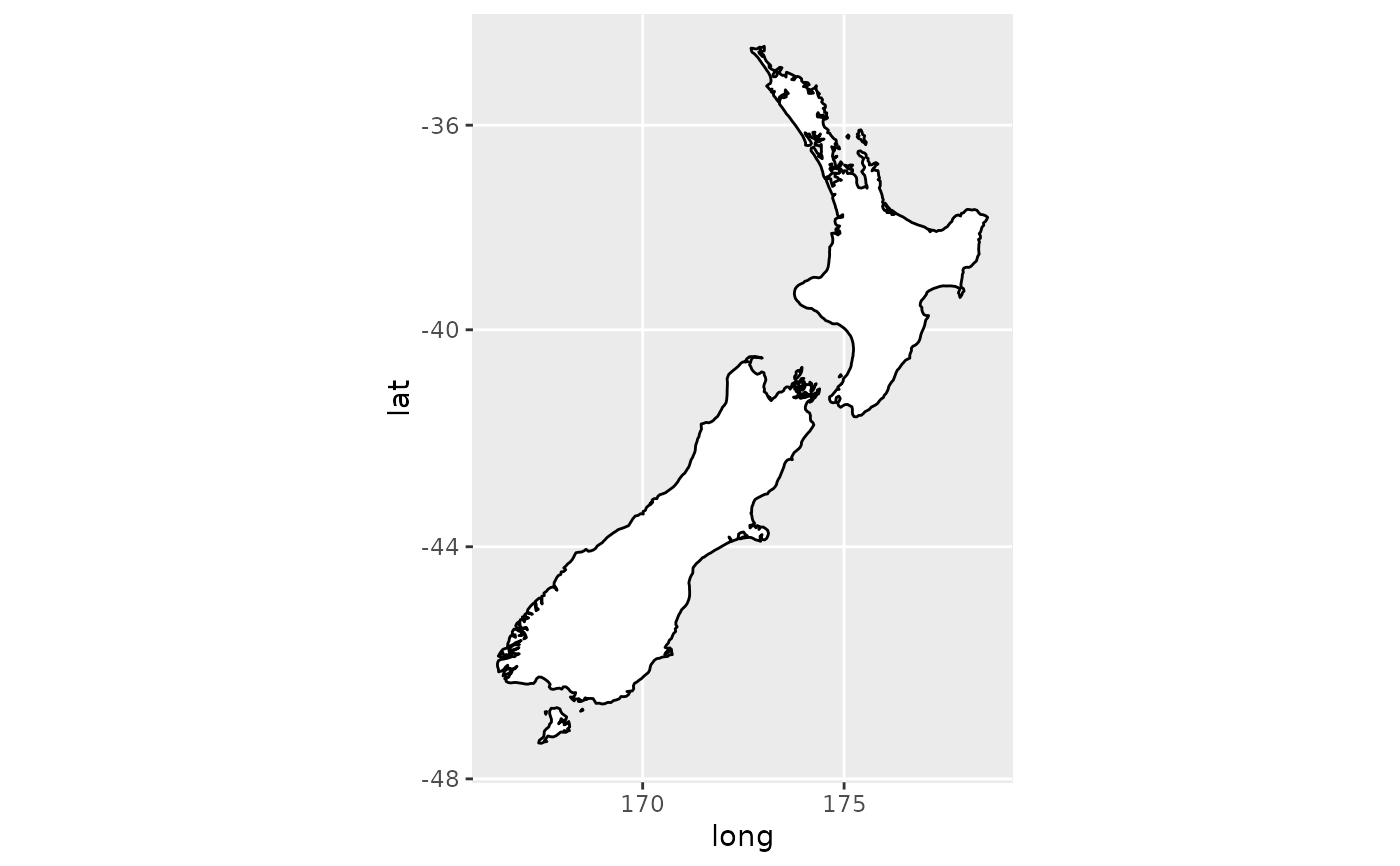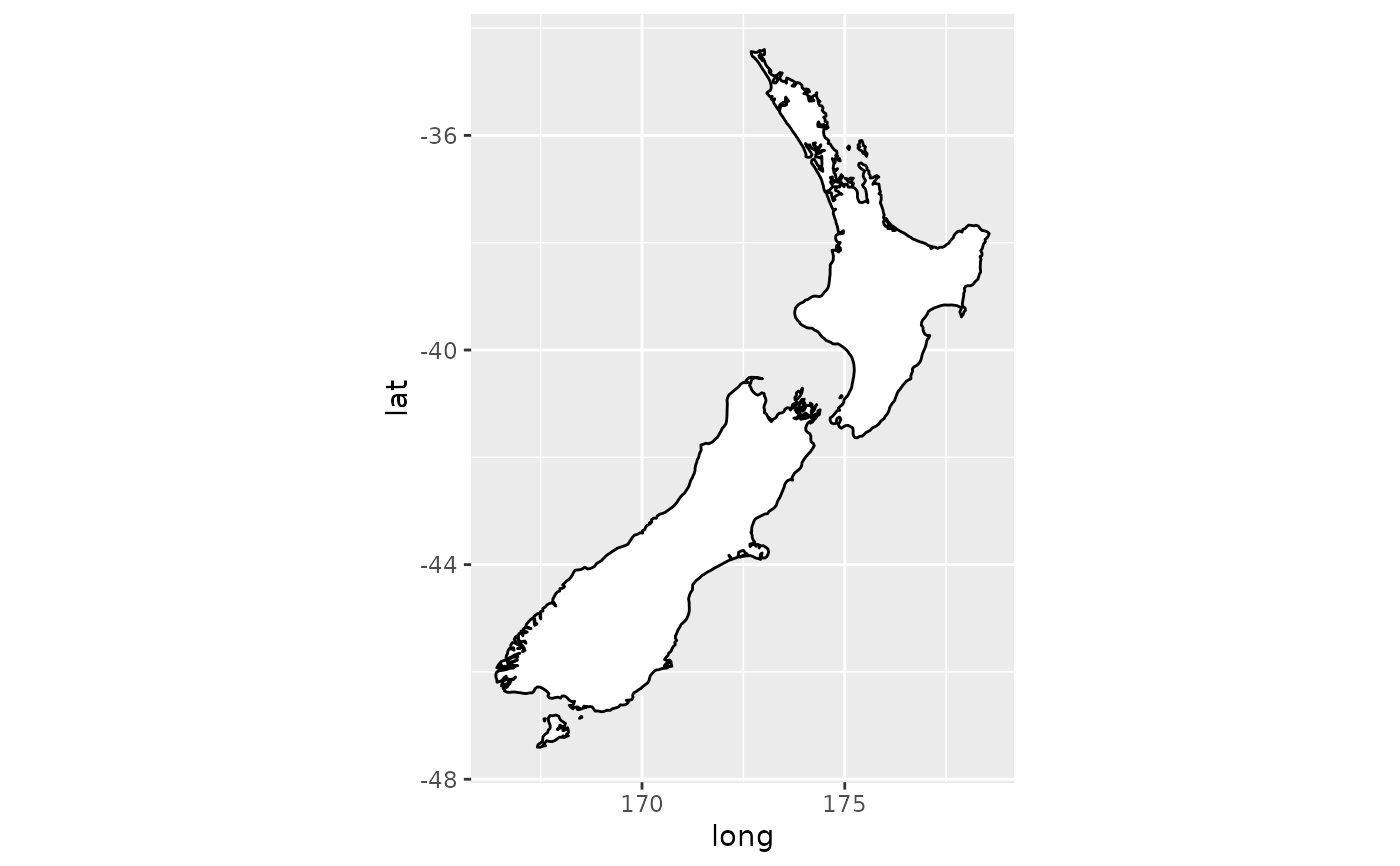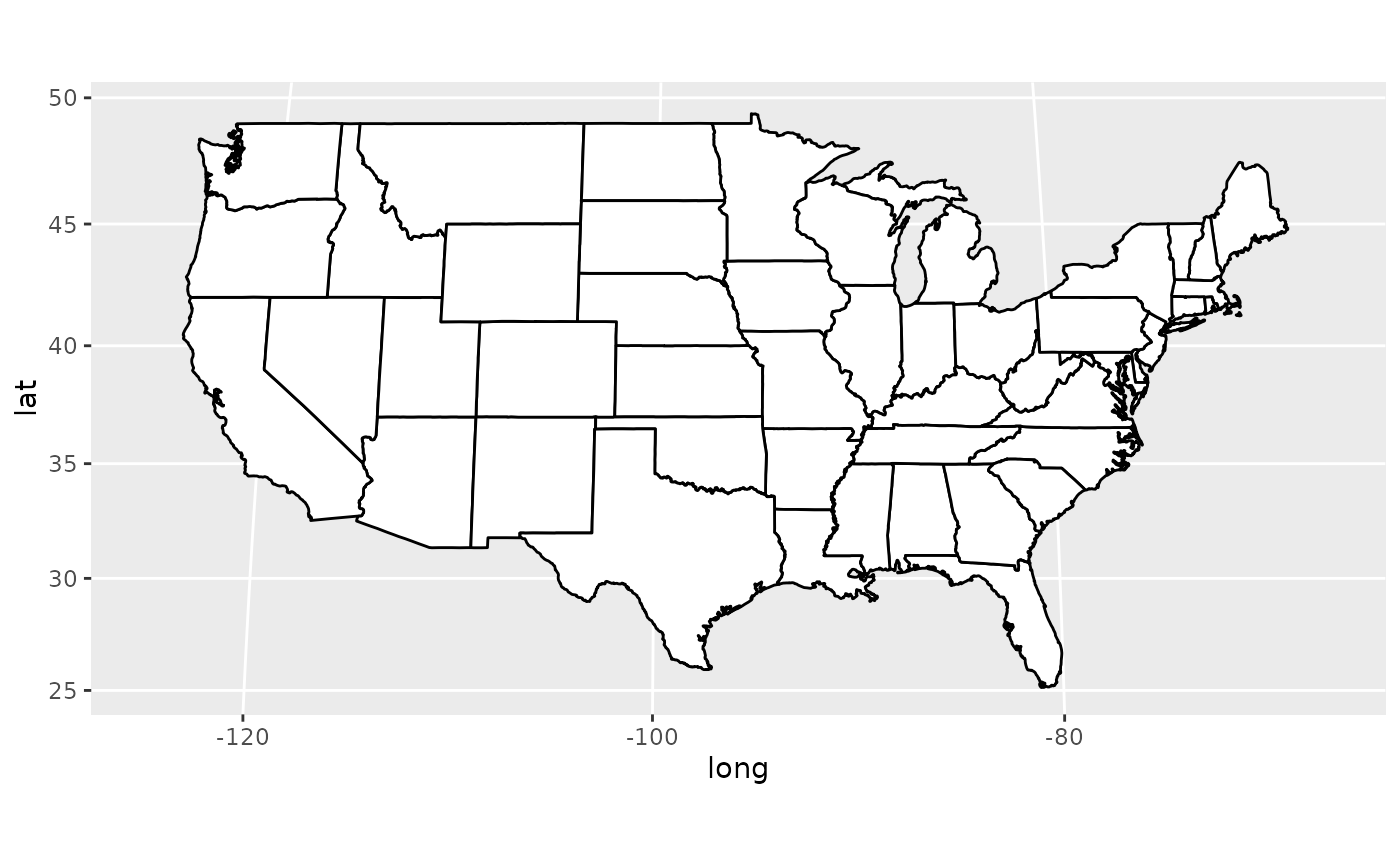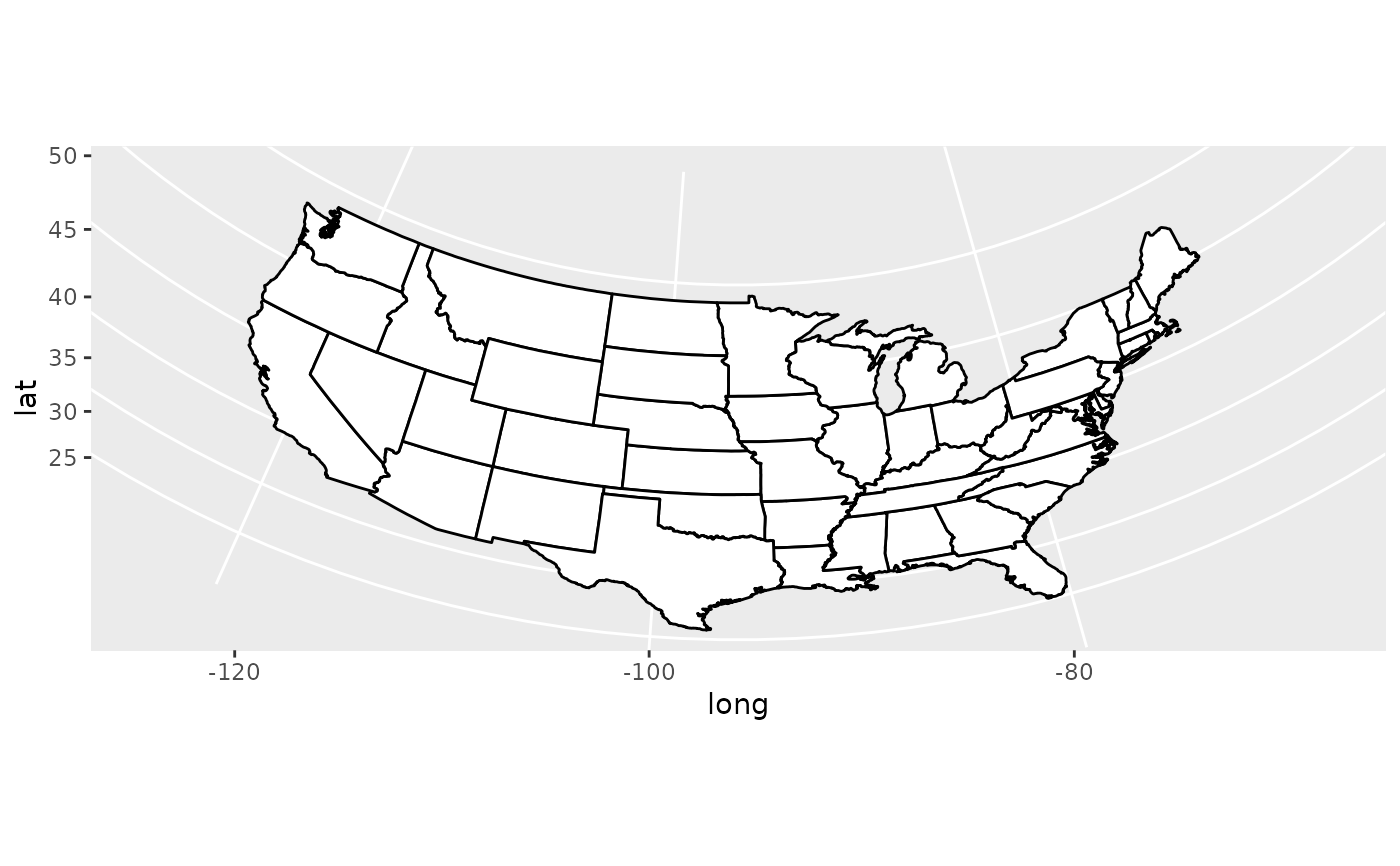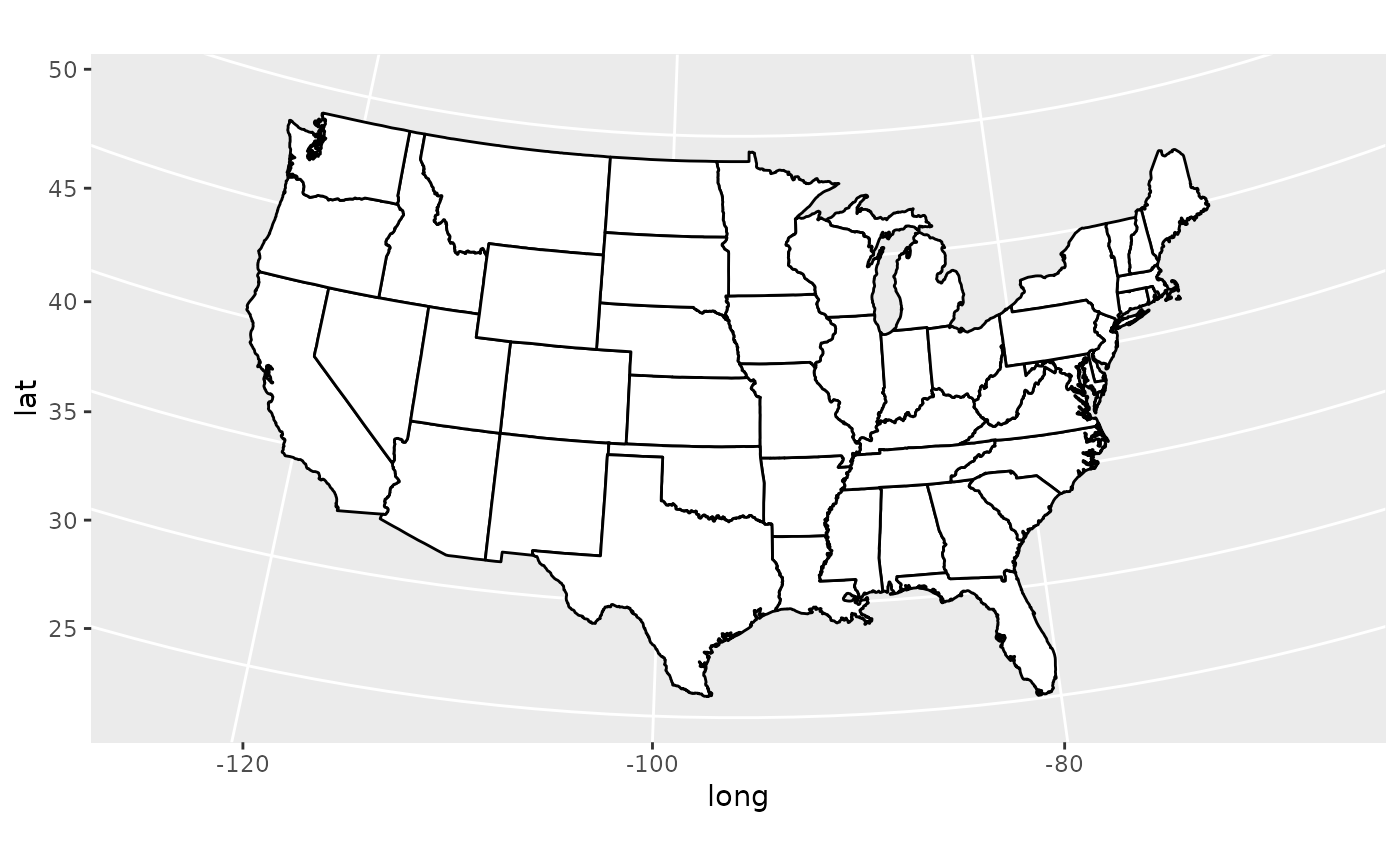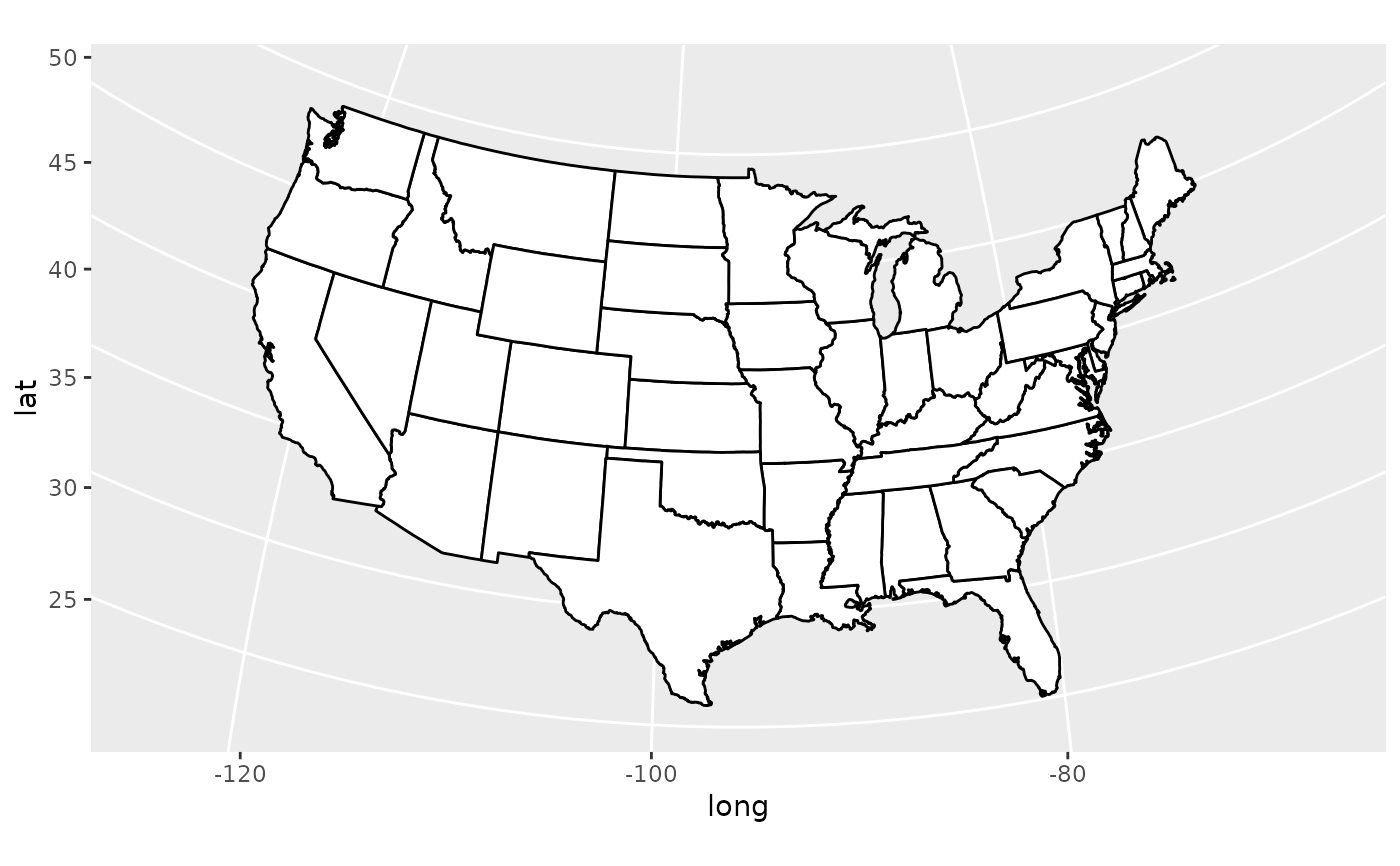coord_map() projects a portion of the earth, which is approximately
spherical, onto a flat 2D plane using any projection defined by the
mapproj package. Map projections do not, in general, preserve straight
lines, so this requires considerable computation. coord_quickmap() is a
quick approximation that does preserve straight lines. It works best for
smaller areas closer to the equator.
coord_map( projection = "mercator", ..., parameters = NULL, orientation = NULL, xlim = NULL, ylim = NULL, clip = "on" ) coord_quickmap(xlim = NULL, ylim = NULL, expand = TRUE, clip = "on")
Arguments
| projection | projection to use, see
|
|---|---|
| ..., parameters | Other arguments passed on to
|
| orientation | projection orientation, which defaults to
|
| xlim, ylim | Manually specific x/y limits (in degrees of longitude/latitude) |
| clip | Should drawing be clipped to the extent of the plot panel? A
setting of |
| expand | If |
Details
In general, map projections must account for the fact that the actual length
(in km) of one degree of longitude varies between the equator and the pole.
Near the equator, the ratio between the lengths of one degree of latitude and
one degree of longitude is approximately 1. Near the pole, it tends
towards infinity because the length of one degree of longitude tends towards
0. For regions that span only a few degrees and are not too close to the
poles, setting the aspect ratio of the plot to the appropriate lat/lon ratio
approximates the usual mercator projection. This is what
coord_quickmap() does, and is much faster (particularly for complex
plots like geom_tile()) at the expense of correctness.
Examples
if (require("maps")) { nz <- map_data("nz") # Prepare a map of NZ nzmap <- ggplot(nz, aes(x = long, y = lat, group = group)) + geom_polygon(fill = "white", colour = "black") # Plot it in cartesian coordinates nzmap }if (require("maps")) { # Other projections nzmap + coord_map("azequalarea", orientation = c(-36.92, 174.6, 0)) }if (require("maps")) { states <- map_data("state") usamap <- ggplot(states, aes(long, lat, group = group)) + geom_polygon(fill = "white", colour = "black") # Use cartesian coordinates usamap }if (require("maps")) { # See ?mapproject for coordinate systems and their parameters usamap + coord_map("gilbert") }if (require("maps")) { # For most projections, you'll need to set the orientation yourself # as the automatic selection done by mapproject is not available to # ggplot usamap + coord_map("orthographic") }if (FALSE) { if (require("maps")) { # World map, using geom_path instead of geom_polygon world <- map_data("world") worldmap <- ggplot(world, aes(x = long, y = lat, group = group)) + geom_path() + scale_y_continuous(breaks = (-2:2) * 30) + scale_x_continuous(breaks = (-4:4) * 45) # Orthographic projection with default orientation (looking down at North pole) worldmap + coord_map("ortho") } if (require("maps")) { # Looking up up at South Pole worldmap + coord_map("ortho", orientation = c(-90, 0, 0)) } if (require("maps")) { # Centered on New York (currently has issues with closing polygons) worldmap + coord_map("ortho", orientation = c(41, -74, 0)) } }

